“Safe” is a word used far too often in ENO’s bizarre new version of a programme, full of uncredited articles, at least two of which look as if they’re AI generated. Everything intimacy director Haruko Karoda, Niamh O’Sullivan (Carmen) and John Findon (Don José) say makes sense, but the context is worrying. What’s a Carmen without real danger? Revival director Jamie Manton has toned down Calixto Bieito’s once-semi-controversal production, and it shows.
O’Sullivan has emerged as a marvellous singer-actor, with a singular, beautiful and at times sensual mezzo instrument. She makes Carmen real: defiant, provocative and fierce, brave rather than couldn’t-care-less, without ever seeming just to “do” sexy. The point is still made that she’s fighting against male violence all the time (pace what the programme keeps telling us, why would this need to be muted in an era where it’s still happening all the time?) But this isn’t the kind of voice that cuts in the big spaces of the Coliseum.
I’d forgotten how vast the place can feel – time for a move? - and Alfons Flores’ vast open stage doesn’t help (nor did a similar setting for Claus Guth‘s Jenůfa at the Royal Opera, where singers had to be brought to the front all the time). Having seen Carmen in an ideal space like Glyndebourne, close to the ideal of fine-tuned Bizet's original theatre. I yearned for the intimacy (weirdly, that one worked best on its Prom visit to the Royal Albert Hall). Act Three, as before, is the most successful, the set filled not only with people but with six Mercedes in addition to the titular one (pictured below, Ava Dodd, O'Sullivan and John Findon).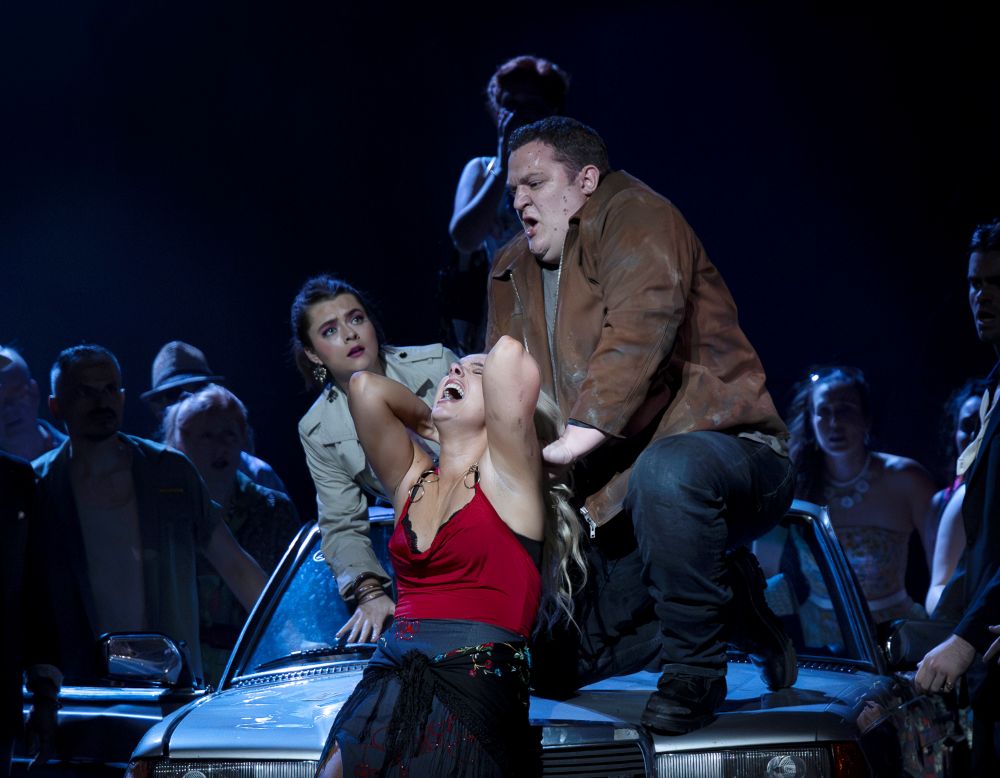 Clelia Cafiero often helps with supportive, supple conducting - the ENO Orchestra playing the introduction to the Seguidille was a high spot – but although she keeps the beat high for those on stage, co-ordination didn’t always work on the first night. The soldiers in Act One are way too far back at first; the delectable Quintet of smugglers started messily but settled very well.
Clelia Cafiero often helps with supportive, supple conducting - the ENO Orchestra playing the introduction to the Seguidille was a high spot – but although she keeps the beat high for those on stage, co-ordination didn’t always work on the first night. The soldiers in Act One are way too far back at first; the delectable Quintet of smugglers started messily but settled very well.
She has at least very musically fine-tuned soloists to work with. John Findon looked as if he might be too heldentenorish a bit of casting for the sensitive corporal who can’t control his violence, but he surprises with remarkable tender singing in the first half, not least in the Flower Song; the famous rise to what should be a quiet top B flat worked beautifully, and not in falsetto. Every powerful phrase hits home, the acting is credible enough, but the final deadly confrontation has holes in the staging, again maybe to do with playing safe (watch Garanca and Alagna really go for it in the film of Richard Eyre’s Met production). 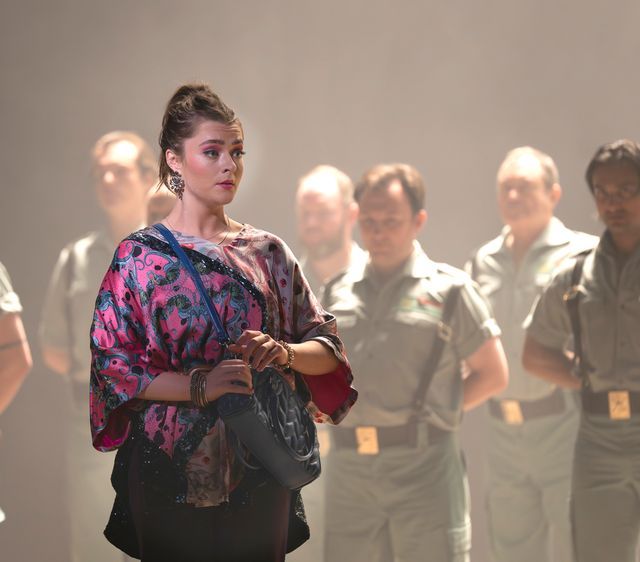 Similarly the second young Irish singer among the principals, ENO Harwood Artist Ava Dodd, seemed on paper too light a voice for Micaëla (pictured above). But she projects the words and the sudden surges of feeling stunningly; the central part of the aria in Act Three where the girl has come to search for Jose among the smugglers – brave thing – to tell him his mother is dying is an emotional high point of the evening. Bieito has always made Micaela no mere pale opposition to Carmen; the way she spits at her before leaving still has the capacity to shock.
Similarly the second young Irish singer among the principals, ENO Harwood Artist Ava Dodd, seemed on paper too light a voice for Micaëla (pictured above). But she projects the words and the sudden surges of feeling stunningly; the central part of the aria in Act Three where the girl has come to search for Jose among the smugglers – brave thing – to tell him his mother is dying is an emotional high point of the evening. Bieito has always made Micaela no mere pale opposition to Carmen; the way she spits at her before leaving still has the capacity to shock.
The only weak link is a serious one: did they really have to go to America to find an Escamillo as unprepossessing as Cory McGee, pitchwise all over the place in the Toreador Song, if slightly better in Act Three? Jolyon Loy has powerful presence in the opening scene of threating militia; the women smugglers, Harriet Eyley as Frasquita and Siân Griffiths as Mercédès, do well in a the deft outer sections of the Card Scene. The chorus only really comes into its own at the front of the stage cheering the arrival of the bullfighting squadrons. The children, courtesy of an ENO Engage project, have ideal spirit, though they need to come out from between the rows of soldiers sooner in Act One (pictured below at the front of the stage). 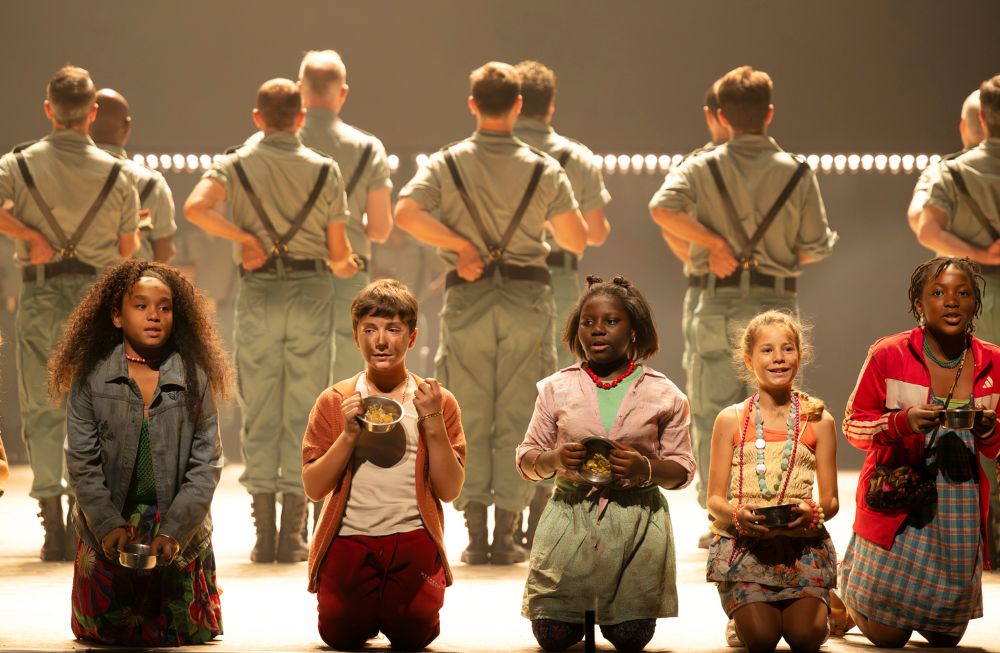 It’s probably time to lay “the Bieito Carmen” to rest. A choreographer was always needed in this of all operas; "intimacy director" is no substitute. Dialogue is cut to a bare minimum, which leaves puzzles,even if Christopher Cowell's translation is strong and clear throughout. Figures we either don’t understand (the flash bloke at the beginning) or hardly see (the dancer-bullfighter hidden by the mists during the loveliest of the interludes) add nothing, though the shocker of Mercédès' young daughter tarted up as bait for the customs officers remains. Without real guts, though, as this production now is on its fourth revival, what was once hard-hitting is now only fitfully fierce.
It’s probably time to lay “the Bieito Carmen” to rest. A choreographer was always needed in this of all operas; "intimacy director" is no substitute. Dialogue is cut to a bare minimum, which leaves puzzles,even if Christopher Cowell's translation is strong and clear throughout. Figures we either don’t understand (the flash bloke at the beginning) or hardly see (the dancer-bullfighter hidden by the mists during the loveliest of the interludes) add nothing, though the shocker of Mercédès' young daughter tarted up as bait for the customs officers remains. Without real guts, though, as this production now is on its fourth revival, what was once hard-hitting is now only fitfully fierce.

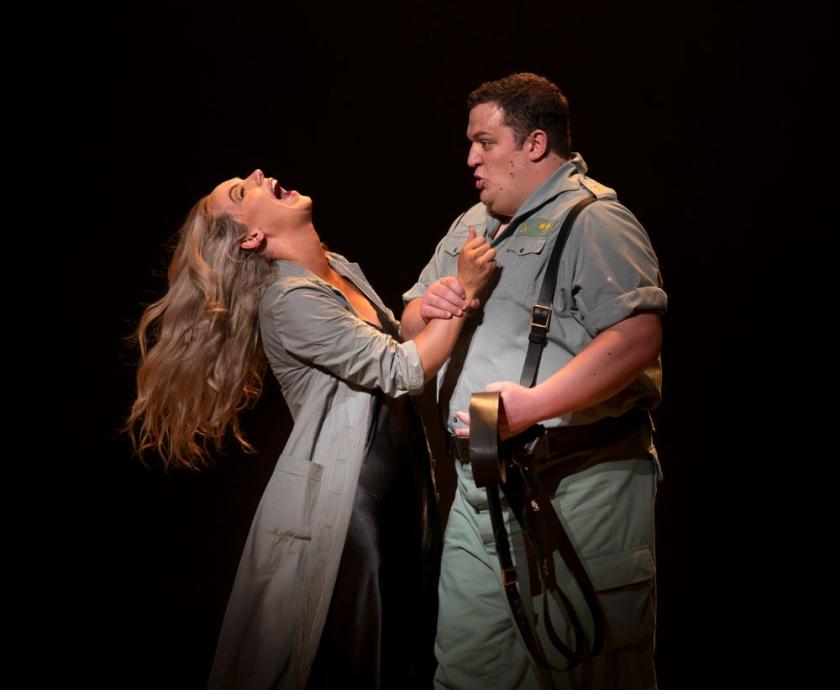

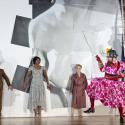
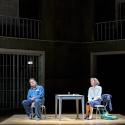










Add comment